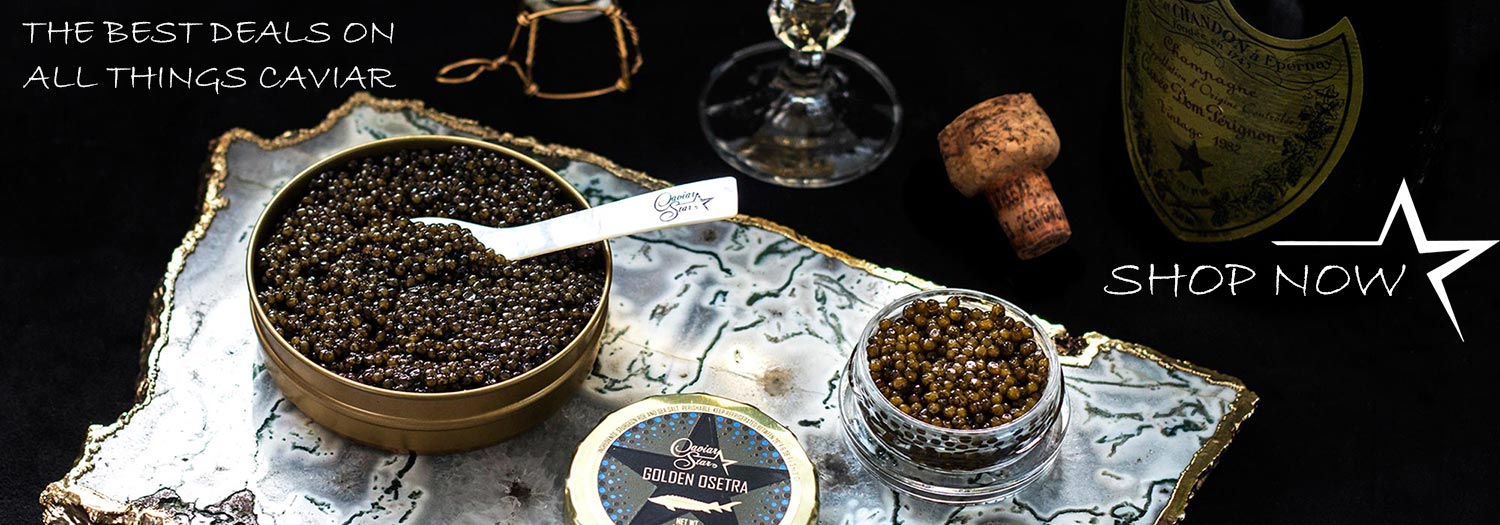Ways to Get Caviar Without Breaking the Bank

Caviar is a delicacy that embodies luxury, but that doesn’t mean you have to break the bank to enjoy it. With a little knowledge, you can make informed choices that suit both your palate and your budget. Whether you're new to caviar or looking to refine your purchasing decisions, these 10 tips for how to buy caviar will help you buy smarter and savor every bite.
Why Is Caviar So Expensive?
Caviar’s price tag reflects the time, care, and expertise required to produce this delicacy. Sourced from sturgeon—some of the oldest and most prized fish in the world—true caviar takes years to cultivate. The meticulous process of sustainable farming, careful harvesting, and delicate salt curing ensure the highest quality. Add to that the costs of proper storage, temperature-controlled shipping, and limited global supply, and it’s no surprise that caviar remains a luxury item.
However, with the right knowledge, you can find exceptional caviar at a range of price points—allowing you to indulge without overspending. Here’s how to do it:
Expect a Higher Price, but Know Your Budget
Caviar is a rare and meticulously produced delicacy, which naturally comes with a higher price tag. That said, there are quality options at various price points. Before shopping, decide how much you're willing to spend and explore different varieties to find one that aligns with your taste and budget.
Choose Where You Buy Wisely
While fine dining restaurants serve top-tier caviar, they often mark up prices significantly. Buying from reputable online retailers, gourmet grocery stores, or specialty caviar shops can be more cost-effective. With a bit of research, you can recreate an exquisite caviar experience at home for a fraction of the price. You can easily buy caviar online right here at Caviar Star.
Learn the Names—Both Common and Latin
Caviar types can be confusing, with various marketing terms in play. To make sure you're getting what you pay for, familiarize yourself with the common and Latin names of caviar varieties. This knowledge helps you avoid substitutions and guarantees authenticity.
Explore Different Types and Styles
Not all caviar is created equal, and price doesn’t always dictate preference. Caviar varies by fish species, production methods, and even individual harvests. Start with entry-level roes and work your way up to premium sturgeon varieties to discover your personal favorites.
Understand Texture Expectations
Caviar isn’t just about taste—it’s about texture, too. While high-end sturgeon roe is firm and delicate, other fish roes offer different sensations. Manage your expectations; the priciest caviar won’t always deliver the signature “pop” of salmon or trout roe.
Order the Right Amount
A typical tasting portion is 15 to 30 grams per person. If serving caviar at home, plan accordingly to avoid waste. For experienced caviar lovers, an ounce per person is ideal, while newcomers may prefer a half-ounce portion.
Keep It Simple with Accessories
While caviar service can be lavish, you don’t need extravagant accessories to enjoy it. Mother-of-pearl spoons and blinis are nice touches, but plastic spoons and fresh bread with butter can be just as delightful. Prioritize the caviar itself before investing in extras.
Store It Properly for Freshness
Caviar is perishable, and proper storage is key. Keep it between 26° and 36°F, ideally with ice packs in your fridge. Never freeze premium caviar, and once opened, consume it within 10 days to ensure the best flavor and texture.
Serve It Like a Connoisseur
Chilled but not too cold—that’s the secret. Let caviar sit for about 10 minutes before serving to enhance its flavors. Keep the tin or jar on ice without letting water seep in, and plan accompaniments in advance for a seamless tasting experience.
Discover Your Favorite Pairings
Caviar pairs beautifully with champagne, vodka, or even crisp white wines. For food pairings, keep it classic with crème fraîche, blinis, or toast points. Experiment with different combinations to find what enhances your chosen roe best.
Savoring Caviar the Smart Way
Enjoying caviar is all about balance—between indulgence and practicality, tradition and personal preference. With these tips, you can elevate your experience and make the most of every tin.
"No one, not even billionaires, eat at Per Se all the time. Nine rich courses is too much for everyday eating. Nor does anyone feast at Noma every day that it’s open. Reservations are too tough to come by, and no one wants to dine for four hours more than once a year. But if I had a few extra quid lying around, I’d eat caviar morning, noon, and night. It is my fig on a plate, a dish that reveals more about where it came from and how it was processed rather than what a chef did with it. It is one of the world’s most perfect foods."
How to Order Caviar Without Going Totally Broke - Ryan Sutton for Eater.com
"When it comes to fancy New Years Eve snacks, caviar is king. But it can be daunting: isn’t it super expensive? How do you know which kind to buy? And how the hell do you serve it?"
How to Buy Caviar Without Going Broke - Paula Forbes for GQ.com
"Caviar can be an acquired taste, and like many expensive foods prized for the complexity, there is a learning curve when it comes to appreciating their subtlety. Dive right into the deep end with the more expensive caviars, and most likely those more delicate flavors will be missed on you, and your money will have been wasted."
How to Buy Caviar with Confidence - J. Kenji López-Alt for Serious Eats Guide



